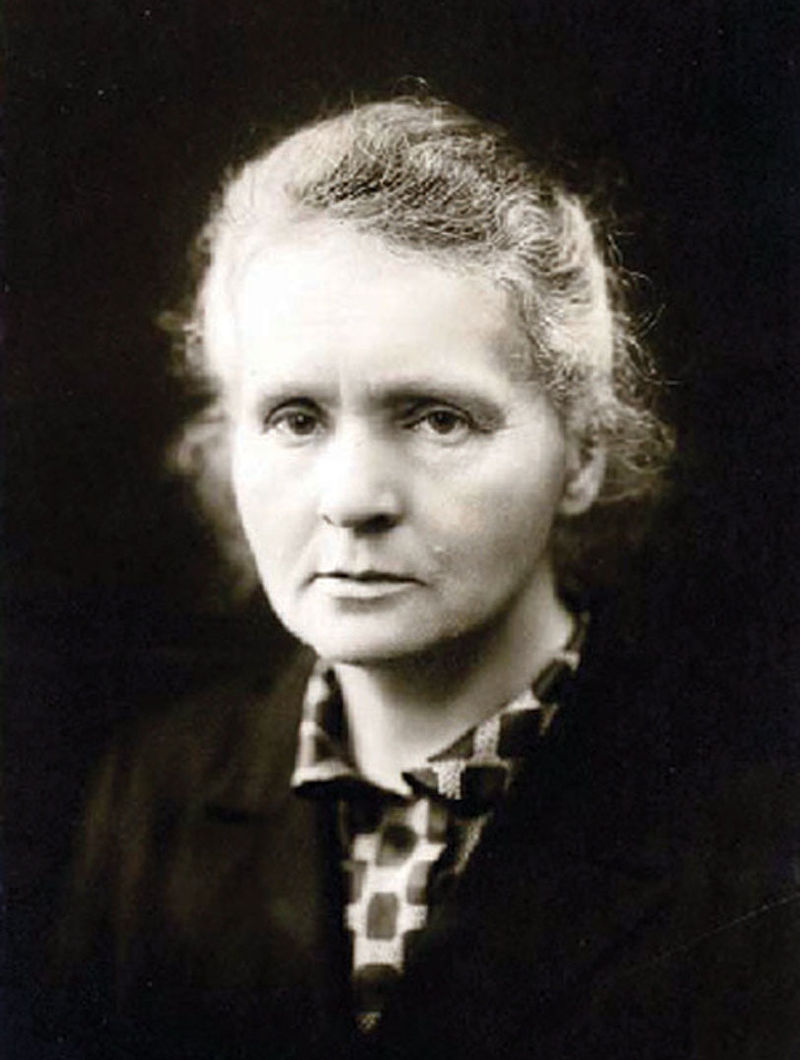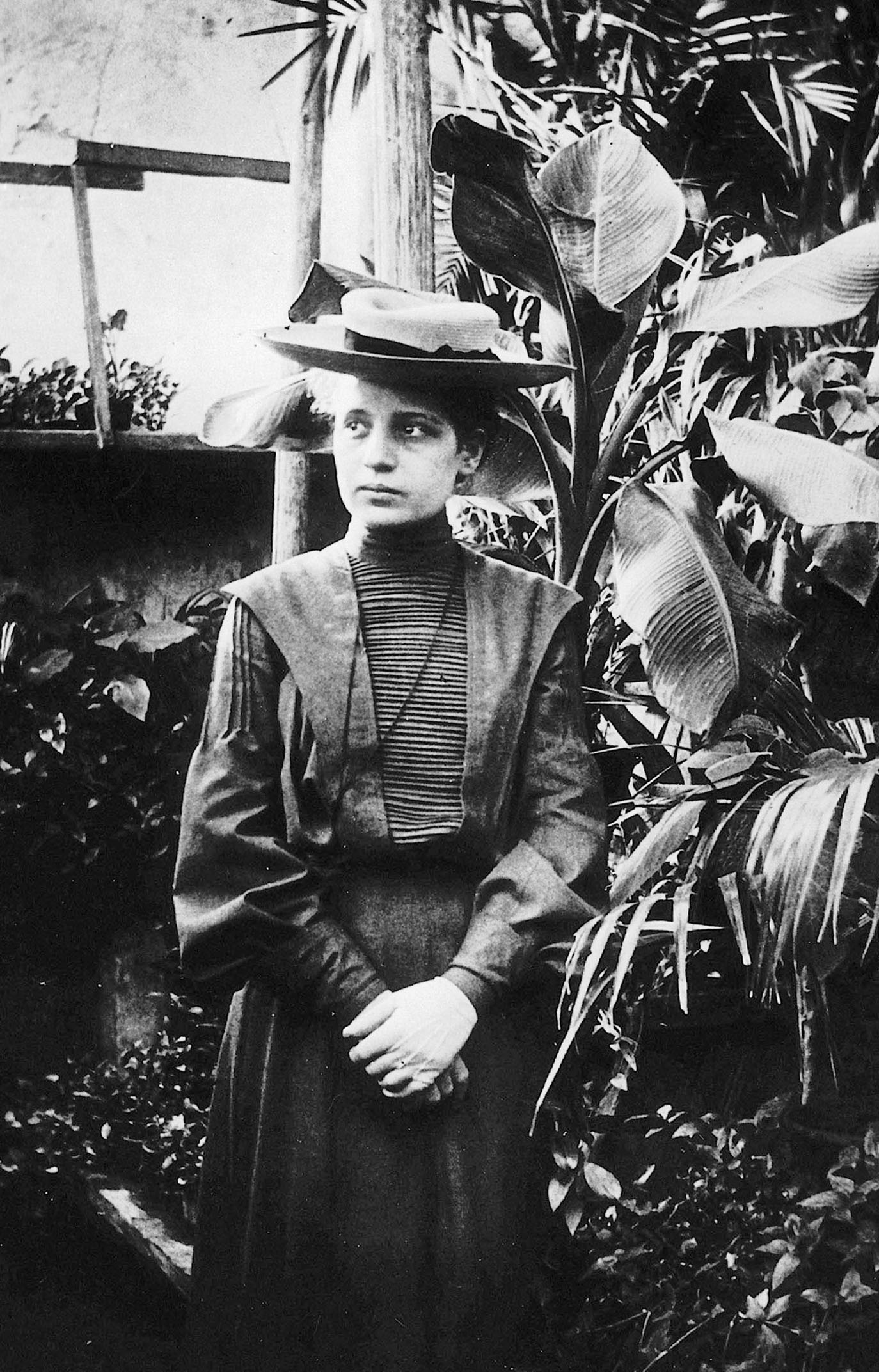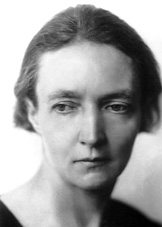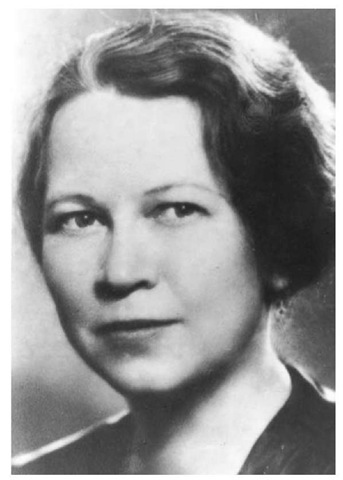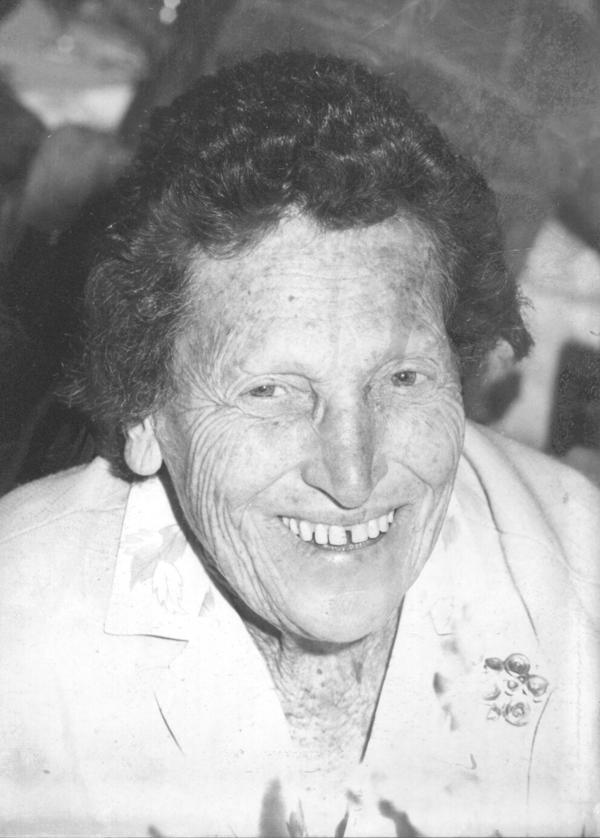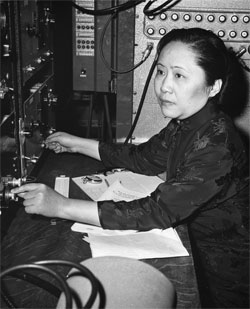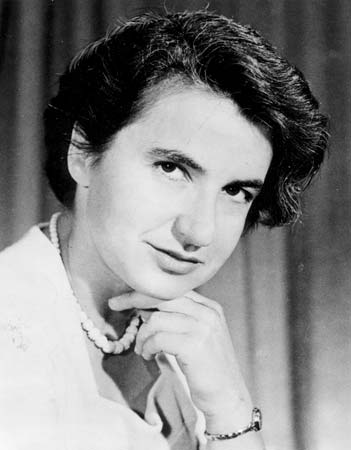The role of women in science is often overlooked. However, the research and discoveries of these brilliant minds have drastically altered commonly held theories in particle physics, chemistry, and nuclear medicine, and contributed to our modern understanding of radiation. In this post, we highlight seven of the most influential women in radiation history and their outstanding accomplishments.
Marie Curie (1867-1934)
Madame Marie Curie was a physicist and chemist whose pioneering research in radioactivity won her two Nobel Prizes in two scientific fields. In addition to her groundbreaking work in nuclear physics and chemistry, she developed the mobile X-ray unit which was first used to diagnose injuries during World War I.
Born in Poland in 1867, Curie moved to France to study physics, chemistry, and math at the University of Paris in 1891. There she met her future husband and research partner Pierre Curie. She earned two degrees from the institution, one in 1893 and another in 1894.
In 1903, Curie and her husband received the Nobel Prize for their joint research in radioactivity alongside Henri Becquerel. They were responsible for the discovery of new elements radium and polonium which came from the radioactive mineral pitchblende, now commonly known as uraninite. She was the first woman to win the Nobel Prize.
In 1910, she was successful in producing radium as a pure metal, further proving the element’s existence, and was awarded her second Nobel Prize in Chemistry in 1911.
Curie served in World War I as the director of the Red Cross Radiology Service. She created small, mobile X-ray units called “Petite Curies” which were vehicles containing an X-ray machine and darkroom equipment. She trained over 150 women to operate the units which ultimately helped treat over one million soldiers near the battlefront.
Curie died in 1934 of aplastic anemia, likely a result of her work with radiation.
Awards & Recognition
- 1903 – Received the Nobel Prize in Physics (with her husband Pierre Curie and Henri Becquerel)
- 1911 – Awarded the Nobel Prize in Chemistry
- 1920 – Became the first female member of The Royal Danish Academy of Sciences and Letters
- 1924 – Became an Honorary Member of the Polish Chemical Society
- Received 4 honorary doctorates from Polish universities
- The radioactivity unit “curie” is named in honor of Marie and Pierre Curie
- Element 96 was named curium
Lise Meitner (1878-1968)
Dr. Lise Meitner was an Austrian-Swedish physicist who helped discover the element protactinium-231 and nuclear fission. She received her doctorate in physics—the second woman to do so—at the University of Vienna in 1906. In 1926 she became Germany’s first female professor of physics, a role she held until the rise of Nazi Germany and the Nuremberg Laws forced her to flee to Sweden to escape religious persecution.
She worked closely with Otto Hahn, a prominent chemist, throughout the years. Their work on discovering isotopes resulted in the introduction of protactinium-231.
In 1939, Dr. Meitner coined the term “fission” after discovering that uranium atoms split when bombarded with neutrons. Her role in this major discovery, which allowed for nuclear energy and nuclear bombs, was overlooked by the Nobel Prize committee, and the award was given exclusively to Otto Hahn in 1944. Because of this discovery, she was invited to work on the Manhattan Project, however, she opposed the atomic bomb and declined the offer. She was ultimately nominated for the Nobel Prize 48 times for physics and chemistry projects but never won.
She was a strong supporter of women in science and spent the last half of her life traveling and speaking to female students.
Awards & Recognition
- 1925 – Awarded the Lieben Prize from the Austrian Academy of Sciences
- 1944 – Named “Woman of the Year” by the Women’s National Press Club in Washington D.C.
- 1945 – Became a foreign member of the Royal Swedish Academy of Sciences
- 1954 – Awarded the inaugural Otto Hahn Prize of the German Chemical Society
- 1966 – She was awarded the Enrico Fermi Award alongside chemists Otto Hahn and Fritz Strassmann for her “pioneering research in the naturally occurring radioactivities and extensive experimental studies leading to the discovery of fission”
- 1997- The chemical element meitnerium was named in her honor
Irene Joliot-Curie (1897-1956)
Irene Joliot-Curie was a chemist and physicist known for her work on natural and artificial radioactivity, transmutation of elements, and nuclear physics.
She was born in Paris, France in 1897 to Marie and Pierre Curie. She studied chemistry at the Radium Institute and completed her Ph.D. in chemistry from the University of Paris. Her doctoral thesis focused on radiation emitted by polonium.
During World War I, Irene worked alongside her mother on the battlefield as a nurse radiographer. For a time, she also taught doctors how to locate shrapnel in soldiers using radiological equipment.
Alongside her husband, chemical engineer Frederic Joliot, Irene studied atomic nuclei. Together they were the first to calculate the accurate mass of the neutron and discovered that radioactive elements can be artificially produced from stable elements. The pair shared the 1935 Nobel Prize in Chemistry in recognition of this discovery, which had practical applications in radiochemistry, specifically in medicine and the treatment of thyroid diseases. In addition, her research on the action of neutrons on heavy elements was an important step in the discovery of nuclear fission.
Outside of her research, Irene was the Chair of Nuclear Physics at the Sorbonne and a Professor in the Faculty of Science in Paris. Beginning in 1946 she served as the director of the Radium Institute and was instrumental in the design of the Institute of Nuclear Physics in Orsay, France. She died in 1956 of leukemia, likely a result of her work with polonium-210.
Awards & Recognition
- 1935 – Received the Nobel Prize in Chemistry for the discovery of artificial radioactivity (with Frederic Joliot-Curie)
- 1940 – Received the Barnard Gold Medal for Meritorious Service to Science (with Frederic Joliot-Curie)
- Was an Officer of the Legion of Honour
Edith Quimby (1891-1982)
Edith Quimby was a pioneer in the field of radiation physics, a founder of nuclear medicine, and is considered the first female medical physicist in the United States.
She was born in 1891 in Rockford, Illinois, and earned degrees in physics and mathematics from Whitman College and the University of California, Berkeley. Much of her early work at the Memorial Hospital for Cancer and Allied Diseases in New York focused on the medical effects of radiation and limiting side effects with proper dosages. Furthermore, she was also interested in the safe application of radioactive isotopes in the treatment of thyroid disease, brain tumors, and other cancers.
Edith Quimby helped found the Radiological Research Laboratory at Columbia University, was the first female physicist president of the American Radium Society and was influential in the founding of the American Association of Physicists in Medicine. She was a professor at both Cornell University Medical College and Columbia University, and she authored several books throughout her career, including the classic Physical Foundations of Radiology (1944), and over 70 scientific papers.
Awards & Recognition
- 1940 – Recipient of the Janeway Medal from the American Radium Society
- 1941 – Awarded the Gold Medal of the Radiological Society of North America
- 1963 – Awarded the Gold Medal from the American College of Radiology
- AAPM established a lifetime achievement award in her honor
Tikvah Alper (1909-1995)
Tikvah Alper was a renowned radiobiologist and physicist whose work on identifying the infection agent in Scrapie revolutionized scientific understanding of diseases like mad cow disease and kuru.
She was born in 1909 in South Africa and graduated with a distinction in physics from the University of Cape Town in 1929. She was mentored by Lise Meitner as a doctoral student in Berlin from 1930 to 1932 where she published an award-winning paper on delta rays produced by alpha particles.
In addition to her life as a mother and homemaker, she was a physics lecturer at Witwatersrand University and researched in Britain on the irradiation of bacteriophage. She became head of the Biophysics Section in South Africa’s National Physics Laboratory; however, she was forced out of this position in 1951 due to her opposition to apartheid. Afterward, she moved to London with her family and worked her way up to director of Hammersmith Hospital’s MRC Experimental Radiopathology Research Unit in 1962.
Alper found that radiation did not kill the infective agent in Scrapie, an infectious brain disease found in sheep. Instead, by irradiating scrapie samples with different wavelengths of UV light, Alper was able to prove the infective agent was able to replicate despite its lack of nucleic acid. This work became extremely important during Britain’s Mad cow disease outbreak in the 1990s.
Chien-Shiung Wu (1912-1997)
Chien-Shiung Wu, also known as the “First Lady of Physics,” was a Chinese American particle and experimental physicist who worked on the Manhattan project and played an important role in the advancement of nuclear and particle physics.
Madame Wu was born in 1912 in Shanghai. She received a degree in physics from what is now known as Nanjing University and later enrolled at the University of California, Berkeley where she completed her Ph.D. She worked as a physics instructor at Princeton University and Smith College before joining the Manhattan Project in 1944. Her work at the Substitute Alloy Materials Lab was meant to support the gaseous diffusion program for uranium enrichment. Her research also improved Geiger counters for radiation detection.
As a leading physicist on beta decay, Madame Wu was able to confirm Enrico Fermi’s 1933 theory of beta decay. She was also responsible for disproving “the law of conservation of parity” in what is known as the Wu Experiment. In this experiment, she measured the small particles released from cobalt-60 atoms and found that they were emitted asymmetrically. This proved the theory that parity is not reserved for beta decay, vastly altering long-held beliefs in the physics community.
Awards & Recognition
- 1958 – Became the 7th female member elected to the National Academy of Sciences
- 1964 – Was the first woman to win the Comstock Prize in Physics from the National Academy of Sciences
- 1975 – Became the first woman president of the American Physical Society
- 1975 – Honored with the National Medal of Science
- 1978 – Received the first Wolf Prize in Physics
- 1990 – 2753 Wu Chien-Shiung asteroid was named after her
- Held honorary degrees from Harvard University, Dickinson College, University of South Carolina, University of Albany, SUNY, Columbia University, and National Central University
Rosalind Franklin (1920-1958)
Rosalind Franklin was a chemist and X-ray crystallographer who is best known for her work on the structure of DNA, RNA, and coal. She also performed cutting-edge research on the molecular structure of viruses that cause plant and human diseases.
Franklin was born in London, England in 1920. She studied physical chemistry at Newnham Women’s College at the University of Cambridge. During World War II, Franklin researched the physical chemistry of coal and carbon under the British Coal Utilisation Research Association. By studying the porosity of coal, she concluded that substances were expelled in order of molecular size as temperature increased. This work was important for accurately classifying and predicting coal performance for fuel and wartime production and served as her Ph.D. thesis.
After the war, Franklin accepted a position as a research fellow at King’s College London. During this time, she investigated DNA samples. She took clear x-ray diffraction photos of DNA and was able to conclude that the forms had two helices. Her work–specifically her image Photo 51–was the foundation of James Watson and Francis Crick’s discovery that the structure of DNA was a double-helix polymer, for which she was not cited or credited.
Afterward, she continued working with x-ray diffraction photos of viruses at the J.D. Bernal’s crystallography laboratory at Birkbeck College and collaborated with virus researchers from around the world. She studied RNA of the tobacco mosaic virus and contributed to published works on cucumber virus 4 and turnip yellow mosaic virus.
During her career, she published 19 articles on coal and carbons, 21 on viruses, and 5 on DNA.
Versant Physics is proud to be a woman-owned company at the forefront of the medical physics and radiation safety industry. To learn more about our physicists and service offerings, visit our regulatory page.


